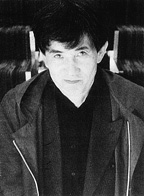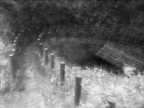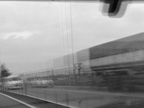Juror
Yoshimasu Gozo
 [Juror’s Statement]
[Juror’s Statement]
Cinema is the “medium of dreams” . . .
this saying may have a rather dated ring,
but cinema is still a deep, deep source for everyone.
As Buson put it in his haiku,
“Oh, my eyes,
old, but yet a spring.”
The infinite spirit of cinema lingers . . .
a spirit that lives inside all people,
that murmurs “an eternal echoing of cinema.”
No matter how much you ladle out,
that spirit is never exhausted.
Born in 1939. A highly acclaimed poet and visual artist, Yoshimasu has published over thirty books of poetry, among them works that are available in several languages. He has extended his poetry into other forms of artistic expression—calligraphy, photography, and film. Through his photos and films taken at different places in the world, he captures landscapes and translates them into a delicate texture of interconnected images. Yoshimasu has received prestigious awards and honors in Japan and abroad. |
From KI-SE-KI—gozoCiné

- Maimaizu Well: Take 1 (“Maimaizu ido—take I”) (8 min)
- Maimaizu Well: Take 2 (“Maimaizu ido—take II”) (7 min)
- An Abandoned Swimming Pool, Tateshina (“Purudaira”) (7 min)
- Nagi Leaves, Kumano, . . . (“Kumano, nagi no ha, . . .”) (15 min)
- Amami Film: In Memory of Miho-san (“Amami film—Miho san tsuito”) (13 min)
Japan / 2008 / Japanese, English / Color / Video
Director, Photography, Editing: Yoshimasu Gozo
English Narration: Marilya Corbot
Production Company, Source: Osiris Co. Ltd. www.osiris.co.jp
 Five titles will be screened out of the 19 gozoCiné short films (shot between July 2006 and November 2007 using the camera’s slow shutter mode) incorporated in the compilation DVD/book project KI-SE-KI, which in Japanese can mean either “trail” or “miracle.” Yoshimasu visits an ancient well near the US Yokota Air Base, a dried-up swimming pool in Tateshina, the writer Nakagami Kenji’s home Kumano, and Amami Island in memory of the late Shimao Miho. He travels like a pilgrim in search of a sacred prayer site, and like a painter adding layers of watercolor to a picture, he inserts his narrating voice, music, film material, sea shells in front of the lens of his handheld camera. A form of visual expression that is extremely vital.
Five titles will be screened out of the 19 gozoCiné short films (shot between July 2006 and November 2007 using the camera’s slow shutter mode) incorporated in the compilation DVD/book project KI-SE-KI, which in Japanese can mean either “trail” or “miracle.” Yoshimasu visits an ancient well near the US Yokota Air Base, a dried-up swimming pool in Tateshina, the writer Nakagami Kenji’s home Kumano, and Amami Island in memory of the late Shimao Miho. He travels like a pilgrim in search of a sacred prayer site, and like a painter adding layers of watercolor to a picture, he inserts his narrating voice, music, film material, sea shells in front of the lens of his handheld camera. A form of visual expression that is extremely vital.


